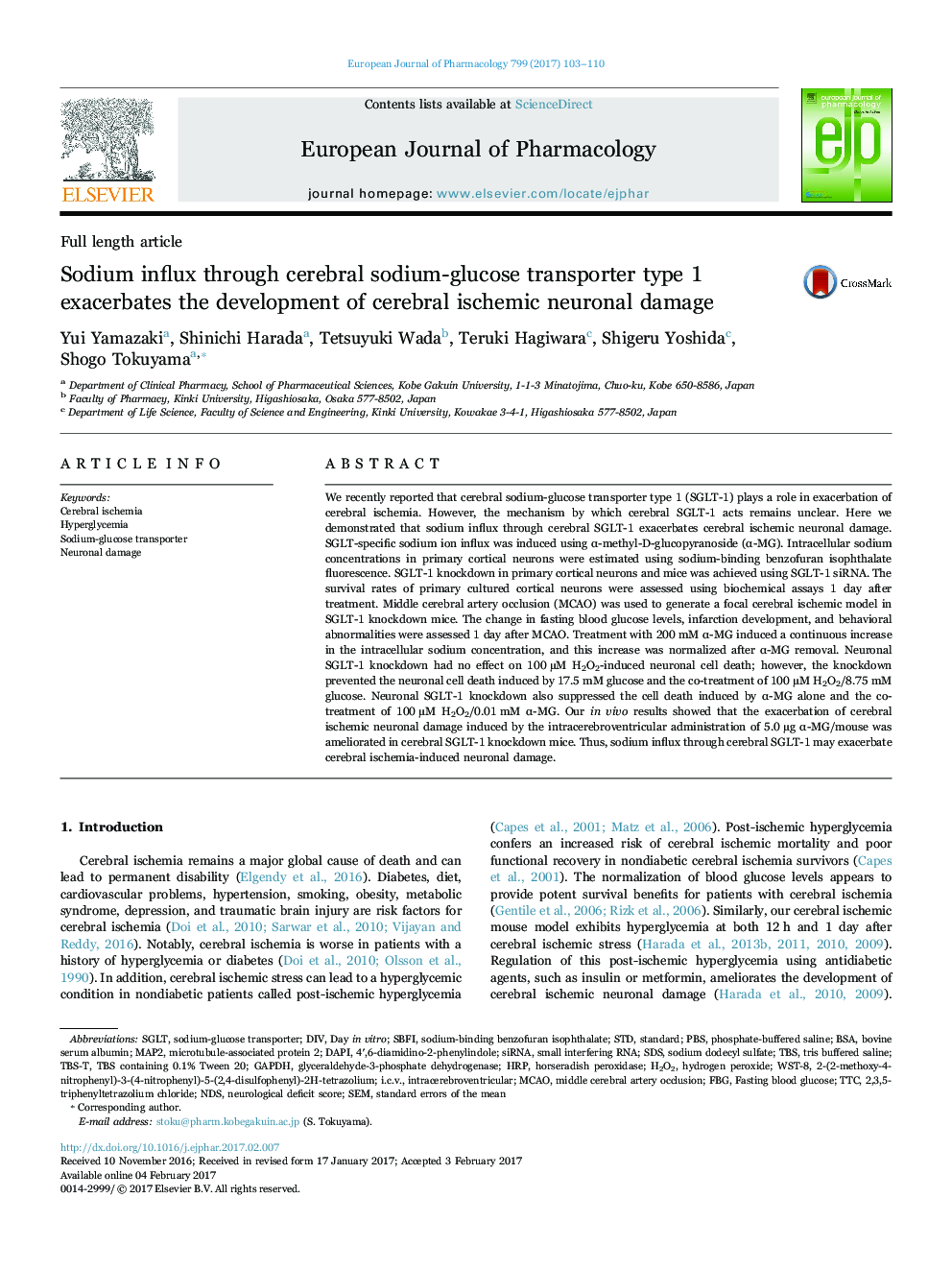| Article ID | Journal | Published Year | Pages | File Type |
|---|---|---|---|---|
| 5554714 | European Journal of Pharmacology | 2017 | 8 Pages |
We recently reported that cerebral sodium-glucose transporter type 1 (SGLT-1) plays a role in exacerbation of cerebral ischemia. However, the mechanism by which cerebral SGLT-1 acts remains unclear. Here we demonstrated that sodium influx through cerebral SGLT-1 exacerbates cerebral ischemic neuronal damage. SGLT-specific sodium ion influx was induced using α-methyl-D-glucopyranoside (α-MG). Intracellular sodium concentrations in primary cortical neurons were estimated using sodium-binding benzofuran isophthalate fluorescence. SGLT-1 knockdown in primary cortical neurons and mice was achieved using SGLT-1 siRNA. The survival rates of primary cultured cortical neurons were assessed using biochemical assays 1 day after treatment. Middle cerebral artery occlusion (MCAO) was used to generate a focal cerebral ischemic model in SGLT-1 knockdown mice. The change in fasting blood glucose levels, infarction development, and behavioral abnormalities were assessed 1 day after MCAO. Treatment with 200 mM α-MG induced a continuous increase in the intracellular sodium concentration, and this increase was normalized after α-MG removal. Neuronal SGLT-1 knockdown had no effect on 100 µM H2O2-induced neuronal cell death; however, the knockdown prevented the neuronal cell death induced by 17.5 mM glucose and the co-treatment of 100 µM H2O2/8.75 mM glucose. Neuronal SGLT-1 knockdown also suppressed the cell death induced by α-MG alone and the co-treatment of 100 µM H2O2/0.01 mM α-MG. Our in vivo results showed that the exacerbation of cerebral ischemic neuronal damage induced by the intracerebroventricular administration of 5.0 µg α-MG/mouse was ameliorated in cerebral SGLT-1 knockdown mice. Thus, sodium influx through cerebral SGLT-1 may exacerbate cerebral ischemia-induced neuronal damage.
